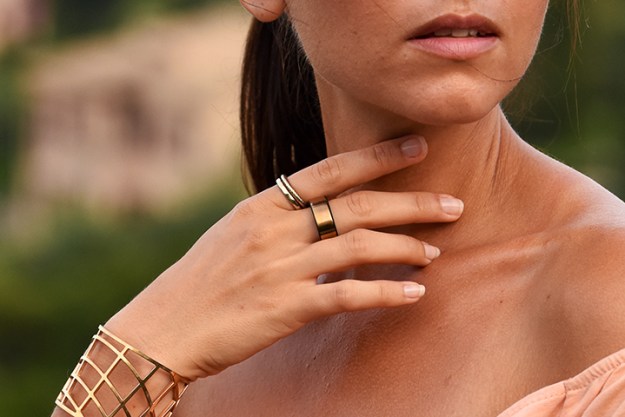
Usually, the concussions are suffered by the largest men on the field, the offensive and defensive linemen.
Wondering why, Marucci began researching sensors and accelerometers, most suited for use in helmets or even do-rags.
Nothing was quite right until he stumbled across i1 Biometrics’ Vector MouthGuard, which addressed his questions and concerns differently — its sensors are embedded inside the age-old protective dental device, delivering a more accurate and real-time measure of force to the head.
The information gathered from the Vector MouthGuard can lead to increased detection and awareness.
“It’s a fixed portion of your skull,” explains Jesse Harper, i1 Biometrics’ CEO. “Think of it like a smartphone in your mouth. We have accelerometers, gyroscopes, microprocessors – all of those things in the mouthguard.
“So, because of the fit with your teeth, everywhere your skull goes, the mouthguard is able to measure that.”
Adds Marucci: “It was a perfect marriage of what we were looking for — more data … It’s like having a computer on board — it can check for safety. It’s basically another set of eyes you can have.”
The results are transmitted to a trainer or physician on the sideline, viewable via laptop or smartphone. There are no lights or buttons – once the mouthpiece is inserted, it turns on. It comes with a clam-shell charging case that runs on a pair of AA batteries that should last an entire season.
Made from ExxonMobil’s Vistamaxx elastic polymer technology, the Vector MouthGuard is extremely durable, which is key because the cost — $199 — might be prohibitive for some, particularly high-school players.

Harper says the mouthpiece, which was field-tested this year by four high-school teams across the country and will be available for purchase at the start of the 2015, is designed for use in multiple sports. There will be an adult and a youth version.
It’s important to note that this product will not diagnose concussions, the hot-button topic surrounding football (and athletics, really) at all levels. But the information gathered from the Vector MouthGuard can lead to increased detection and awareness.
Who isn’t interested in that?
“Yes, we’re for-profit, but I got into this because I care about the sport,” Harper says. “I want to keep these players as safe as possible, have a better understanding of what they’re going through on the field of play, coach them and give them better tools to be successful and ultimately help the sport … The NFL does things like move the kickoffs forward for less acceleration time. We don’t know if that does anything. If we have a different helmet type, does that translate to force to the head? Playing on grass or turf? Three-point stance versus two-point stance?…
“Everywhere your skull goes, the mouthguard is able to measure that.”
“This is the first scalable way to get this data from these players, to build context. That’s my ultimate goal.”
Already, it has served as a vital teaching tool at LSU.
There is a secondary benefit as well. Because areas of impact can be traced – a 3-D rendering of the head is among the data instantly transmitted — it can also serve as a performance device. If a player is ducking his head during a tackle and using the crown of his helmet, which is not only an enforceable penalty but also dangerous, potentially career-threatening, it can be fixed.
“It has already corrected some of our guys,” Marucci says.
He estimates 20 players are currently using the Vector MouthGuard, down from an original 30, a dip the athletic trainer attributes to “compliance.” It seems some simply don’t want to use the high-tech mouthpiece.
But the data culled from those that stuck with it? It has reinforced Marucci’s theories, particularly regarding the offensive and defensive linemen, those behemoths most apt to sustain concussions.

“It’s micro-traumas,” he says. “A lot of contact. They’re always making contact. People don’t look at that as much. They see the big blow and the guy goes down … This gave us confirmation on an offensive lineman in a regular practice may take — the cut-off for an ‘impact’ hit is 25 Gs or greater – up to 15 to 20 ‘impacts’ a practice.
“Over a year, if you add this up, it gives us some relevance to say we need to re-evaluate how we practice, to re-evaluate training camp.”
In fact, Marucci has already gleaned enough information from LSU’s limited use of the Vector MouthGuard that he’s comfortable enough to conclude that “training camp is antiquated, probably a little lengthy and you don’t need two-a-days.” And this is in the football-obsessed Southeastern Conference.
Talk about change.
Images: John Ballance / The Advocate


